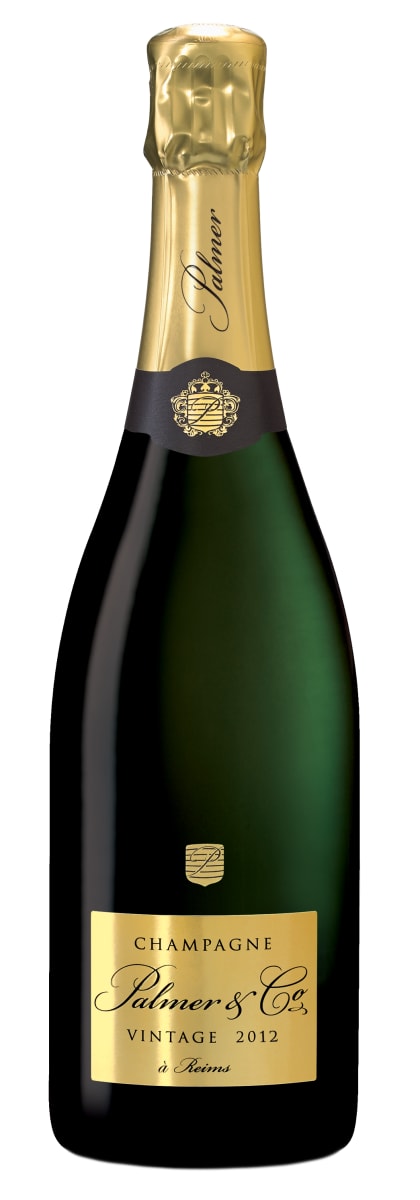Champagne Palmer Vintage 2012
- Decanter
-
Wine
Spectator -
Robert
Parker



Product Details
Your Rating
Somm Note
Winemaker Notes
Professional Ratings
-
Decanter
Nougat, pine nuts, almond and verbena on the nose; grip and a phenolic subtext, slate and stone fruit; rigour and potential tease us with a beguiling persuasion. A complete wine with exceptional length.
-
Wine Spectator
This expressive Champagne is laced with exotic notes of fresh ginger, jasmine and lime blossom, with a toasty edge of grilled nut to the black cherry and nectarine fruit flavors. Firm and well-knit, offering a lingering finish. Chardonnay and Pinot Noir. Drink now through 2034
-
Robert Parker's Wine Advocate
Disgorged in May 2018 with eight grams per liter dosage, Palmer's newly released 2012 Brut Vintage is showing very well indeed, offering up a deep bouquet of peach, yellow orchard fruit, buttered toast and iodine. Full-bodied, fleshy and vinous, it's a rich and muscular wine, reflecting the concentrated vintage, with racy acids and a classy pinpoint mousse.






Representing the topmost expression of a Champagne house, a vintage Champagne is one made from the produce of a single, superior harvest year. Vintage Champagnes account for a mere 5% of total Champagne production and are produced about three times in a decade. Champagne is typically made as a blend of multiple years in order to preserve the house style; these will have non-vintage, or simply, NV on the label. The term, "vintage," as it applies to all wine, simply means a single harvest year.

Associated with luxury, celebration, and romance, the region, Champagne, is home to the world’s most prized sparkling wine. In order to bear the label, ‘Champagne’, a sparkling wine must originate from this northeastern region of France—called Champagne—and adhere to strict quality standards. Made up of the three towns Reims, Épernay, and Aÿ, it was here that the traditional method of sparkling wine production was both invented and perfected, birthing a winemaking technique as well as a flavor profile that is now emulated worldwide.
Well-drained, limestone and chalky soil defines much of the region, which lend a mineral component to its wines. Champagne’s cold, continental climate promotes ample acidity in its grapes but weather differences from year to year can create significant variation between vintages. While vintage Champagnes are produced in exceptional years, non-vintage cuvées are produced annually from a blend of several years in order to produce Champagnes that maintain a consistent house style.
With nearly negligible exceptions, . These can be blended together or bottled as individual varietal Champagnes, depending on the final style of wine desired. Chardonnay, the only white variety, contributes freshness, elegance, lively acidity and notes of citrus, orchard fruit and white flowers. Pinot Noir and its relative Pinot Meunier, provide the backbone to many blends, adding structure, body and supple red fruit flavors. Wines with a large proportion of Pinot Meunier will be ready to drink earlier, while Pinot Noir contributes to longevity. Whether it is white or rosé, most Champagne is made from a blend of red and white grapes—and uniquely, rosé is often produce by blending together red and white wine. A Champagne made exclusively from Chardonnay will be labeled as ‘blanc de blancs,’ while ones comprised of only red grapes are called ‘blanc de noirs.’
